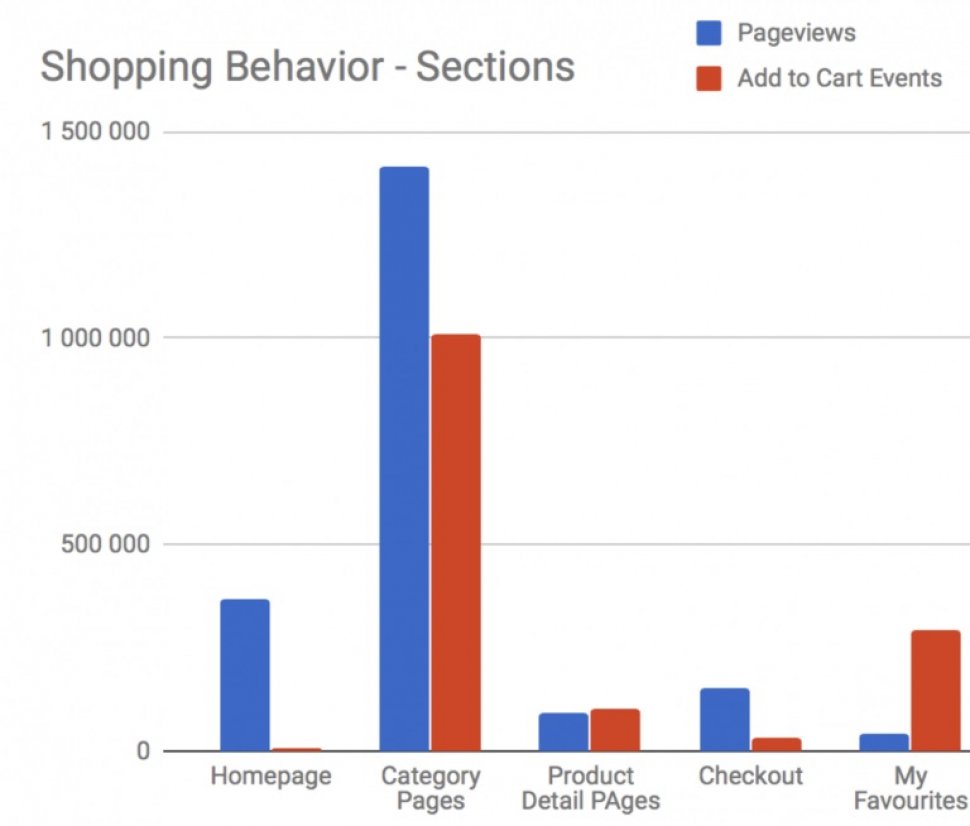UX is like judgment. The less you think you need it, the more you probably lack it.
However, the greater the benefits you can get when you start to embrace UX.
And as this year’s expert-packed panel discussion underscored, good UX can save you a lot of money, time and nerves.
You just have to go against that and keep UX in mind and (at least a little bit) dedicated to it.
UX is not rocket science. UX is a constant effort to make people’s lives easier.
However, to accomplish this, the speakers agreed, you’ll have to get your hands dirty and:
- find out what the customer journey and overall experience with your brand was,
- evaluate the data, to get a more aggregated view,
- track how people interact with your product,
- and ask them what they think of the product.
In other words, For good UX you need to be in touch with reality.Let’s take a look at a set of practical tips, as well as the changes in thinking that this year’s UX panel brought me.
Marek Cevelicek: What happened to you that made you need to redesign your website?
You need to find the bottleneck. That’s where it starts. There always is one, and until you find it, you don’t move on.
UX must have a reason. The customer needs to know why they’re going into UX, and the designer needs to know it too.The foundation of any successful collaboration is therefore a well defined brief, set of expectations and scope of the job.
Underestimating this step is highly unprofitable.
This is why Marek highly recommends starting with a design brief, a set of questions that the developer asks the client at the beginning to clarify what the project is about and what the goal of the collaborative effort is.
Once the designer understands the brief, the search often begins. The search for the bottleneck.
You have to figure out where friction is created in the conversion process and then figure out how to eliminate it.
Due to the specificity of individual projects, it is hard to estimate in advance how much something will take or cost. However, living with a degree of uncertainty and flexibility will often allow you to get the most out of a given UX designer’s services.3 practical tips from Mark’s talk
- 1️⃣ A good assignment is the foundation of success, for both the assignor and the processor. Do not underestimate it.
- 2️⃣ The right questions must be asked of the UX designer, both the user and the requester, and the internal team.
- 3️⃣ most effective is to work continuously and in iterations. Find the bottleneck -> fix it -> create friction elsewhere -> focus on it… UX is a long-term activity, not a hamburger-eating activity.
If you want to catch even more from Mark, follow him on LinkedIn and Medium.
David Koci – “Look at the right metrics, don’t blindly look at conversion rate, but the overall benefit of the business.”
Understanding business starts with
David places huge emphasis on getting started with Mark, and he knows exactly why. His first questions to a client include 20-30 pages of questions that help him understand the workings of the business. He is most interested in concerns, customer decision making and motivations, competitors, top selling and most commercially important products/services.
If you want insight into the questions, email David at in**@*******ci.cz.
Measuring and Determining the Right Metrics
A common problem is that companies don’t measure and evaluate, which is a road to hell. Always choose meaningful metric(s) to judge success against before you embark on anything.
Often the focus is only on conversion rate. This metric may not be bad, but you need to look at the overall benefit of the business as well. If you only want to increase conversion rate, give a discount on the entire product range or free shipping on everything. You’ll definitely increase the conversion rate, but you probably won’t increase the company’s bottom line.
Focusing on priorities
Another malady is paying unnecessary attention to pages and parts of the site that have negligible business value and are visited by minimal users. These pages certainly have their place on the web, but it doesn’t make sense to give them priority attention.
This is where we typically start by looking at Google Analytics. In other words, if you want UX on steroids, combine it with data.
Outside of the basic web analytics view, there is a handy “Content Grouping” feature in Google Analytics for larger sites (typically e-commerce sites). There tend to be thousands of URLs on e-commerce sites, and if you wanted to analyze each one individually, you wouldn’t get very far, which is where “Content Grouping” comes in handy.
Helps group content by page type (product detail, category, blog article, etc…) and evaluates it according to the grouped data. This makes it easy to see where people are adding products to their cart from (from the shopping cart, product detail, or category?), for example, and you can focus on the pages that benefit the most.
You can see from the example below that focusing too much attention on the Product Detail or Homepage doesn’t make sense, at least not at the beginning.

Not to forget qualitative data
While David emphasizes the importance of quantitative metrics and data, he does not discount data qualitative, typically interviews.
On a project for a large international university, the client believed that the site needed to have detailed course syllabi and course content. He was under the impression that people were making decisions about the school based on:
- expertise,
- hours,
- and individual teachers.
David conducted a series of interviews with students and found that:
- students are primarily interested in what life is like in Prague,
- Since these are often international students, a big factor is whether they and their parents find the university location safe,
- The university is chosen largely by students’ parents, and they, unlike their offspring, often have different ideas about the ideal school.
So in 10 hours of work, David was able to provide data that took the overall communication in a completely different direction.Don’t reinvent the wheel
Last but not least, David put it on the audience’s heart to not reinvent the wheel. He often fixes the same basic bugs on projects over and over again before he can delve into deeper optimization.
For example, if the vast majority have the same ordering process (typically a 3-step process) and you have no data, don’t try to come up with a big revolution with such a well-established standard just because you want something unique and different on your site than most of the market.
For basic features, stick to what works (best practices). Rather, spend time and resources on research and learning about the needs of your target audience.
3 practical tips from David’s talk
- 1️⃣ Don’t use proto-personas, which are often contrived and data-unsupported. Rather, use Value proposition canvas (VPC) instead of personas, whose outputs often have much more practical applications.
- 2️⃣ learn how to routinely use web analytics and enrich your (UX) practice with its outputs.
- 3️⃣ Always be clear about Why you are doing the thing, what the desired outcome is, and what metrics the change is intended to help us with. If someone wants a site redesign, always ask why. What is it supposed to solve for us?
If you would like to take advantage of David’s expertise, feel free to contact him.
Honza Pobořil – If you haven’t talked to your real customers in a while, fix it fast
Reaching local maximums is important, but don’t turn a blind eye to global maximums because of it.
Honza agreed with the others, putting the audience at heart about how terribly important it is to have a good design brief (project brief).Because it’s hard to get to the right place according to a bad map.
Such is a strong proponent of contact with real users. And for creators to be in frequent, and if possible, intense contact with their (possibly future) users. **** sees this as one of the most effective and underrated UX practices.
Because you can’t figure out from your desk in advance what problems people will find when using your product.
Testing may well be minimalist, guerrilla, or with a suboptimal group… But it should be. Ideally regularly.
You should also read books by Steve Krug, they will definitely be a great support for you in the beginning.
3 practical tips from Honza’s talk
- 1️⃣ Test, test, test. Do it on a low budget, on a sub-optimal target, in sub-optimal conditions…, just be in contact with real people.
- 2️⃣ make sure that test results get to key people (and developers), and they should really understand the reality of using your product.
- 3️⃣ continual education. Books are a good start, however, UX is a really complex field and conferences and various community events can help a lot.
If you want to know more, you can contact Honza, or meet him at the Real UX Camp he’s hosting.
Jakub Kantor – Bad UX can hurt a brand, but if you have a bad brand, even the best UX won’t save you
Even if you don’t know the experience customers have with your brand, rest assured that they do.
Why is UX part of branding?
Because branding is largely about exploring the customer journey, where emotions, brand perception, and last but not least functionality and understandability that people take away when they visit a website or e-store are important.The latter elements have a huge impact on UX.
UX and BX should therefore be addressed at each brand touchpoint (touchpoints). This is because such bad UX can affect the whole brand experience.
You know this yourself, right?
You want the convenience of shopping from your mobile phone and then everything around you throws a curveball. No one really wants this, but it still happens. And not just on your website, but in your services as well. UX and BX can be found there too.
Work with your data, explore your customers’ behavior, ask them how they feel, just do that preparation before you do anything.
It’s worth it!
3 practical tips from James’ talk
- 1️⃣ Think about the entire customer journey, not only from a marketing perspective, but also from a UX and BX perspective.
- 2️⃣ If you are addressing UX, make sure that BX also never gets left behind.
- 3️⃣ regularly find out how people perceive your brand and what experiences they associate with it.
If you would appreciate practical help directly from the source, check out the services Jacob offers.
Speaker Introductions

Marek Cevelicek
Marek is a UX designer who improves digital apps to make them easier for people to use and more profitable for their owners. His references include Kooperativa or MEGAKNIHY, and he is a member of the Association of UX Designers. He also contributes and participates in UX community conventions and mentors UX designers.

David Kochi
David is an expert in UX and conversion rate optimization. He improves the business performance of web projects and has been successfully running his own e-shop for 11 years Rigalli.cz. He thinks like an entrepreneur first, then a designer. And thanks to this, he is often referred to as a rising star of Czech UX.

Honza Poboril
Honza is a full-stack developer. It builds websites, apps, e-shops or connects existing apps. He uses a wide range of technology solutions (from Drupalu to no-code on the back-end and Nuxt (Vue) on the front-end). Among others, he has worked for Czech Television, Czech Radio and Memory of the Nation. Along with that, he also organizes RealUXCamp.

Jakub Kantor
Jakub is a branding and branding expert. He knows that a successful brand is not born overnight. The results of his persistent work are brands that people trust and have measurable business growth. He is also the co-author of the podcast Brandhunters.
️ Recommendations for resources and tools:
- Value Proposition Canvas (template)
- Book Make Users Think (user testing edition)
- Book Make the User Think (UX Principles on the Web edition)
- Book 100 Things Every Designer Should Know About People
- Mark’s article E-commerce UX
Report from other panels
Full reports from WordCamp Brno 2022
A little bit of WordPress, a lot of webmaster – Jan Polzer’s report from Maxiorel
WordCamp Brno 2022 – Jirkont Agency
Thank you very much for proofreading Iveta Zlatníčková.





